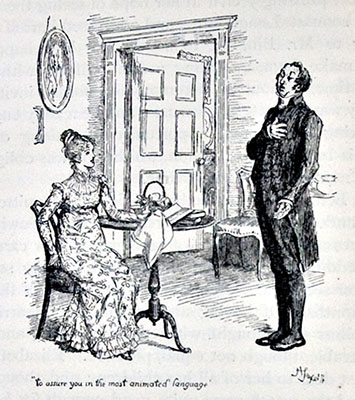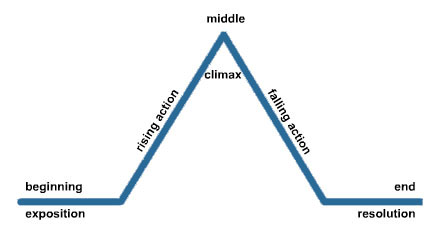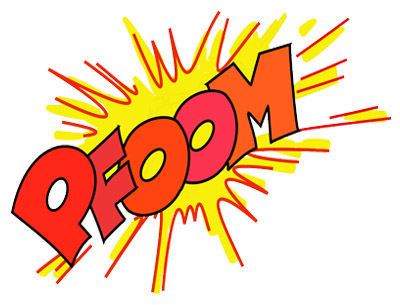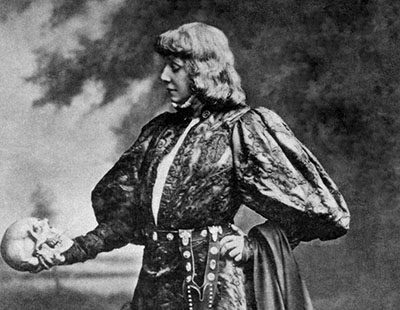When writing a work of fiction, regardless of its length, it is important to include certain elements to make it more dynamic. Several of these fiction writing elements—fiction writing terms—are found in the following glossary. Although Scribendi has an extensive glossary of general writing terms, this one is specific to fiction writing terms and is therefore geared toward authors and writers. For an author, fiction writing terms are important because they provide the tools necessary to make the most out of a literary work. By being aware of certain terms specific to fiction writing, authors will be able to get a better idea of what they should include in their fiction writing, which will then allow them to make their stories more vibrant and appeal to a wider audience. The following is a glossary of terms specific to fiction writing.
A | C | D | E | F | H | I | L | M | N | O | P | R | S | T | U | W
A
Allegory:
a narrative technique in which characters represent things or abstract concepts to convey a message or to teach a lesson. Allegory is usually used to teach moral, ethical, or religious lessons, but it can also be used for satiric or political purposes. An allegory is a symbolic representation, or expression by means of symbolic fictional figures and actions, of truths or generalizations about human existence. In fiction, an allegory is often a symbolic narrative in which the surface details imply a secondary meaning and in which the characters represent moral qualities.
Example: In The Pilgrim's Progress, by John Bunyan, the journey of the main character is an allegory for the Christian life.
Alliteration:
a series of words in a sentence all beginning with the same sound.
Examples: Cassie casually caressed the carefree cat; the Wicked Witch of the West went on her way to work; she sells seashells down by the seashore; Tim thought that Tammy was tired today.
Antagonist:
the main character in a work of fiction who comes into conflict with the protagonist (hero or heroine). Note that the antagonist does not always have to be a character; it could be a thing or a situation (a monster, a storm, a flood, etc.).
Example: Bob Ewell, in Harper Lee's To Kill a Mockingbird, is a malevolent antagonist.
Assonance:
using words that have the same or very similar vowel sounds near one another (as in "summer fun" and "rise high in the bright sky"); vowels are repeated but consonants are not; popular in poetry and prose.
C
Character:
featured in a story and used as a medium to communicate/interact with the reader; he or she is given a specific attitude or attitudes, appearance, name, etc. to direct a storyline. Characters can be major or minor and static (unchanging) or dynamic (capable of change).
Characterization:
the method used by a writer to make a character in a story seem like a real person. Common ways for writers to illustrate characters is through their speech, dress, actions, and mannerisms.
Climax:
the moment of greatest intensity in a work of fiction; the most exciting and important part of a story, usually occurring at or near the end. The climax is the turning point in the action.
Example: The climax of Shakespeare's Romeo and Juliet occurs when Romeo, seeing Juliet's body and thinking she is dead, kills himself; then, when Juliet wakes up and sees that Romeo is dead, she kills herself.
Complication:
a situation or detail of a character that complicates the main thread of a plot. A complication builds up and develops the primary or central conflict in a literary work.
Conflict:
a struggle, disagreement, or difference between opposing forces in a literary work, usually resolved by the end of the work.
Connotation:
in a literary work, an idea or quality that a word makes you think about in addition to its dictionary definition; an implication that goes beyond the actual meaning of a word. Connotations can be positive (childlike [innocent, happy], dove [peaceful] or negative (chicken [cowardly]).
Example: Shakespeare's Sonnet 18: "Shall I compare thee to a summer's day?" A summer's day connotes beauty.
Convention:
a traditional or common style often used in literature, theater, or art to create a particular effect.
Example: romantic conventions (characteristics of romantic literature) include the following:
– Imagination and emotion
– A reliance on intuition
– An emphasis on nature and primitivism
– An idealization of life
– An emphasis on sadness, melancholy, psychology, and introspection
D
Denotation:
the precise/actual meaning of a word outside of the feelings it evokes; the dictionary meaning of a word or phrase. In fiction writing, writers will play off a word's denotative meaning against its connotations or implied associational implications.
Example: A four-leaf clover, rabbit's foot, and wishbone are all considered things that can bring good luck, but they themselves are not luck. Likewise, unicorns, the color white, and white doves can all have the connotation of purity, but they are not part of the actual definition of the word purity. The dictionary meaning of purity is "free from contamination" or "free from immorality, especially of a sexual nature."
Dénouement:
the outcome of a plot; the resolution or final outcome of the main dramatic complication in a literary work. The dénouement reveals the answers to secrets/misunderstandings in the plot and comes after the climax.
Dialogue:
a written composition in which two or more characters are represented as conversing; the conversations between characters in a literary work, typically enclosed within quotation marks.
Diction:
the choice of words, especially with regard to correctness, clearness, or effectiveness, in a literary work. Writers will use words to reveal character, imply certain attitudes, convey action, demonstrate themes, and indicate values.
Dramatic Irony:
dramatic irony, which often shows itself as some type of miscommunication, occurs when the reader becomes aware of something important of which the characters in the story are not aware.
E
Exposition:
this also refers to the first stage of a plot, in which necessary background information is provided.
F
Fable:
a narration intended to enforce a useful truth. Fables frequently involve animals that speak and act like human beings.
Example: The fable of The Eagle and The Crow: A crow saw an eagle grab a lamb and take it to his nest. The crow tried the same thing but was too weak, and his feet got caught in the lamb's fur. The shepherd took the crow and put him in a cage. The moral of the story? Thoughtless imitation is dangerous.
Falling Action:
the action in a story that occurs after the climax, thus moving it toward its resolution.
Fiction:
a story about people and events that are not real; literature that tells a story that has been imagined by the writer.
Figurative Language:
language that does not mean exactly what it states but instead requires the reader to make his or her own association from the comparison.
Examples: hyperbole, understatement, analogy, personification, euphemism, onomatopoeia, simile, metaphor, synecdoche, and metonymy.
Flashback:
when a relevant past event is brought up in the current time of the story. A common way for this to occur is through a narration or a dream. Flashbacks create complications within the chronology of the plot to help enrich the experience of time.

Flat Character:
Image source: Hugh Thomson/Wikimedia Commons
an uncomplicated character in a story who is illustrated by very few traits. A flat character is opposite to a round character. Although such characters are important, they tend to remain static in their temperaments and personalities throughout the story.
Example: Mr. Collins in Jane Austen's Pride and Prejudice is a flat character.
Foil:
a character in a story whose purpose is to bring out certain characteristics in either the main character or in other characters. Thus, the foil character will contrast with and parallel those characters.
Example: Draco Malfoy can be seen as a foil to Harry Potter, being placed in similar situations but making choices that highlight the differences between them.
Foreshadowing:
to give a suggestion of something that will happen in the story.
Example: In Ernest Hemingway's A Farewell to Arms, the line "the leaves fell early that year" foreshadows an early death.
Freytag's Pyramid:
a pyramidal diagram of the structure of a dramatic work; symbolizes Gustav Freytag's theory of dramatic structure. This "dramatic arc," as it is known, comprises five parts: exposition (inciting incident), rising action, climax, falling action (resolution), and dénouement.

H
Hyperbole:
a figure of speech that describes something as better or worse than it actually is by way of extreme exaggeration.
Example: She is as thin as a toothpick; I was so hungry, I could have eaten a horse!
I
Image:
a mental picture or representation of a person, place, or thing in a literary work. The use of images is a powerful literary tool, as images have the ability to convey states of being, feelings, thoughts, and actions.
Imagery:
the images collected and used in a written work to add to the ambiance; language used by a writer that causes readers to imagine pictures in their minds, which gives them a mental image of the people, places, and things in a story.
Example: He could never escape from the iron grip of desire.
Source: YourDictionary.com
Irony:
incongruity between situations developed in a drama and the accompanying words or actions that are understood by the audience (but not by the characters); also called dramatic irony.
Example: In William Shakespeare's Macbeth, Macbeth appears to be loyal to Duncan, even though he is planning Duncan's murder. Duncan does not know Macbeth's plans, but the audience knows what is going to happen.
Source: YourDictionary.com
L
Literal Language:
a form of language in which the writer means exactly what his or her words denote.
M
Metaphor:
a figure of speech in which a word or phrase literally denoting one kind of object or idea is used in place of another to suggest a likeness or analogy between them (as in "drowning in debt").
Examples:
He is the apple of my eye. In this example, there is, of course, no real apple in a person's eye. The "apple" here is referring to someone beloved and held dear.
With a wooden face, he watched the car approach. His face wasn't really made of wood, but the metaphor communicates that he had a still, stoic expression.
Metonymy:
a figure of speech in which a word is replaced by something that is associated with it; it may provide a common meaning for that word.
Examples:
Crown – in place of a royal person.
We must wait to hear from the crown until we make any further decisions.
Ears – for giving attention ("Lend me your ears!" from Mark Antony in Julius Caesar).
Mood:
a conscious state of mind or predominant emotion.
Motif:
the reoccurring aspect (object, issue) in a story; can also be two binary elements in a piece of writing (e.g., bad versus good). A recurring salient thematic element, especially a dominant idea or central theme.
N
Narrative:
a collection of events featured in a story that are placed in a certain order and recounted to tell a story. The story may or may not be true, and the events are placed in a specific order.
Narrator:
the person or character who tells and explains a story; the person who says the words that are heard as part of a story; the person describing what is happening in a story; a person who provides the narration for something.
O
Onomatopoeia:
words that imitate, sound like, or evoke their own meaning; the naming of a thing or action by a vocal imitation of the sound associated with it (such as buzz or hiss).
Example: Words related to the voice. Sounds that come from the back of the throat tend to start with a gr- sound, whereas sounds that come out of the mouth through the lips, tongue, and teeth begin with mu-.

Image source: OpenClips/Pixabay.com
– giggle
– growl
– grunt
– gurgle
– mumble
– murmur
– bawl
– belch
– chatter
– blurt
Source: YourDictionary.com
P
Parable:
a short story that teaches a moral or spiritual lesson, especially one of the stories told by Jesus Christ and recorded in the Bible.
Example:
"Again, the kingdom of heaven is like unto a merchant man, seeking goodly pearls: Who, when he had found one pearl of great price, went and sold all that he had, and bought it" (Matthew 13:45–46, King James Version).
Parody:
according to the Encyclopaedia Britannica, parody is "an imitation the style and manner of a particular writer or school of writers . . . so as to emphasize and thus satirize the weakness of the writer or the overused conventions of the school."
Example: Cold Comfort Farm parodies the style of other novels depicting rural life of the 1920s and 1930s.
Personification:
attributing human characteristics to something that is not human (a thing, an animal, or an abstraction).
Example: Lightning danced across the sky; the flower begged to be watered.
Plot:
a the direction of a story's main events and incidents and how they relate to one another.
Point of View (POV):
the angle from which a story is told or narrated. Point of view can be first person, objective, limited omniscient, or omniscient.
– First person: the narrator is either a character in the story or an observer.
– Objective: the narrator knows (or seems to know) no more than the reader.
– Limited omniscient: the narrator knows some things about the characters, but not everything.
– Omniscient: the narrator knows everything about the characters.
Example: Using the word "I," this sentence is written in the first-person perspective: "It was times like these when I thought my father, who hated guns and had never been to any wars, was the bravest man who ever lived" (Harper Lee, To Kill a Mockingbird).
Protagonist:
the principal or main character in a literary work.
Example: Bilbo Baggins is the protagonist of The Hobbit by J.R.R. Tolkien.
R
Recognition:
the point at which a character acknowledges his or her situation for what it really is; the act of knowing who or what someone or something is because of previous knowledge or experience.
Resolution:
the act of finding an answer or solution to a conflict or problem; the act of resolving something.
Reversal:
the point in the plot at which the action turns in an unexpected direction; usually involves the protagonist.
Rising Action:
the set of conflicts in a story that lead up to the climax.
Round Character:
a character in a story who is complex, dynamic, and maybe even contradictory; a round character is the opposite of a flat character. A round character's personality, background, motives, and other features are fully delineated by the author.
Example: Harry Potter in the Harry Potter series is a round character, as readers are made aware of the intricacies and complexities of his background, motives, and choices.
S
Satire:
a way of using humor to show that someone or something is foolish, weak, bad, etc.; humor or a literary work that shows the weaknesses or flawed qualities of a person, government, society, etc.
Setting:
the time, place, and conditions in which the action of a story takes place and which establish its context.
Simile:
a comparison of two different things using the words like or as.
Example: His eyes were like blazing coals.
Subject:
the main topic of a piece of writing; what a story is about. A subject can be found in a sentence, a paragraph, an essay, or a book.
Subplot:
a subordinate plot in fiction that coexists with the main plot.
Symbol:
something that stands for or suggests something else by reason of relationship, association, convention, or accidental resemblance, especially a visible sign of something invisible; an object or act representing something in the unconscious mind that has been repressed.
Example: Birds are often used as symbols of freedom.
Synecdoche:
a figure of speech by which a part is substituted for the whole (such as "50 sail" for "50 ships"), the whole for a part (such as "society" for "high society"), the species for the genus (such as "cutthroat" for "assassin"), the genus for the species (such as a "creature" for "a man"), or the name of the material for the thing made (such as "boards" for "the stage").
Example: The pen is mightier than the sword.
Syntax:
the way in which linguistic elements (as words) are put together to form constituents (such as phrases or clauses) in a sentence or line of verse or dialogue. The organization of these words and phrases creates prose, verse, and dialogue.
T
Tale:
a story about imaginary events; an exciting or dramatic story; a story about someone's actual experiences; an exciting story that may not be completely true.
Example: Fairy tales, such as Cinderella.
Theme:
the idea of a literary work abstracted from its details of language, character, and action, and cast in the form of a generalization.
Tone:
a particular pitch or change of pitch constituting an element in the intonation of a phrase or sentence; the style or manner of expression in speaking or writing.

Tragic Hero/Tragic Figure:
a protagonist whose story comes to an unhappy end due to his or her own behavior and character flaws.
Example: Shakespeare's Hamlet is a tragic hero.
U
Understatement:
saying that something is smaller or less important than it actually is.
Example: Be careful in the kitchen—the oven can get a bit warm.
W
Writing Style:
the ways in which an author chooses to write words for his or her readers, including how he or she arranges sentences, paragraphs, dialogue, and verse. Style also refers to how the author develops ideas and actions with description, imagery, and other literary techniques.
Header image source: Patrick Fore/Unsplash.com











